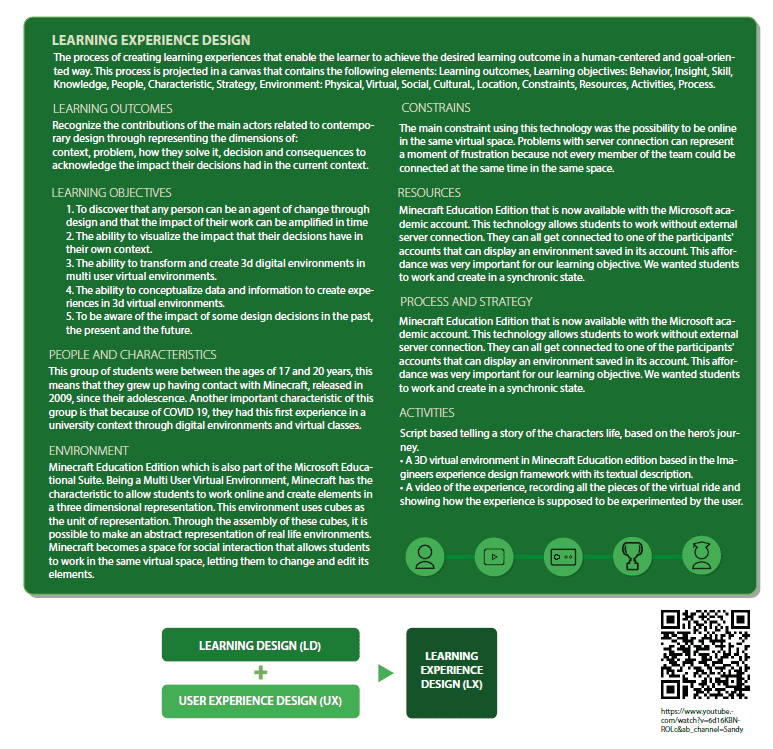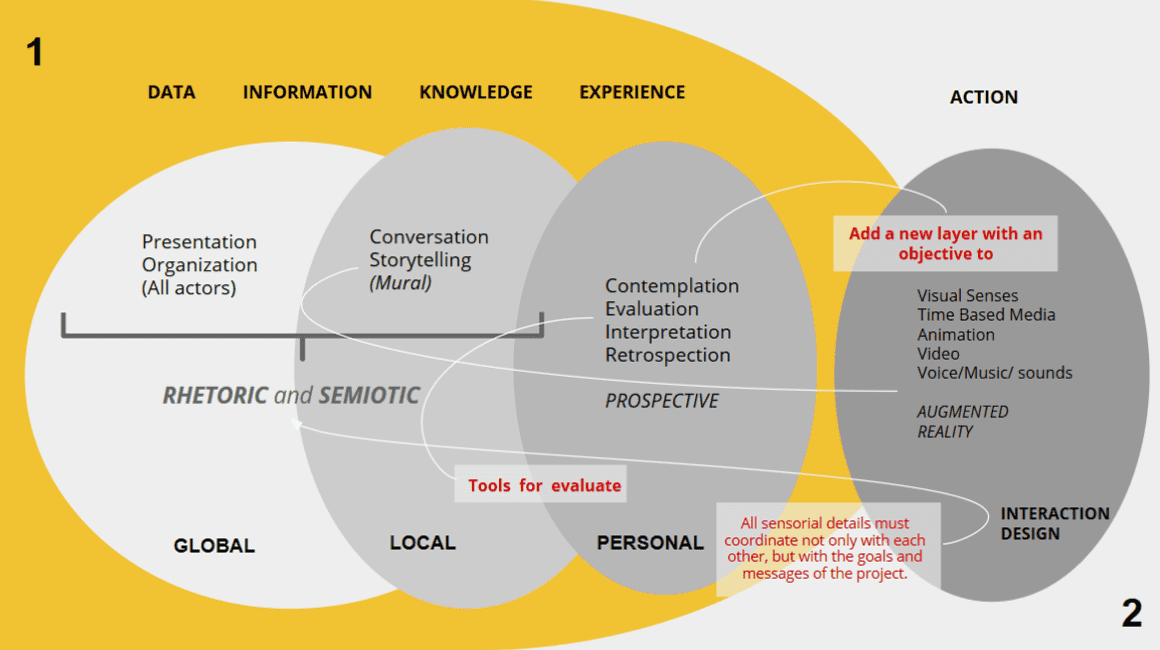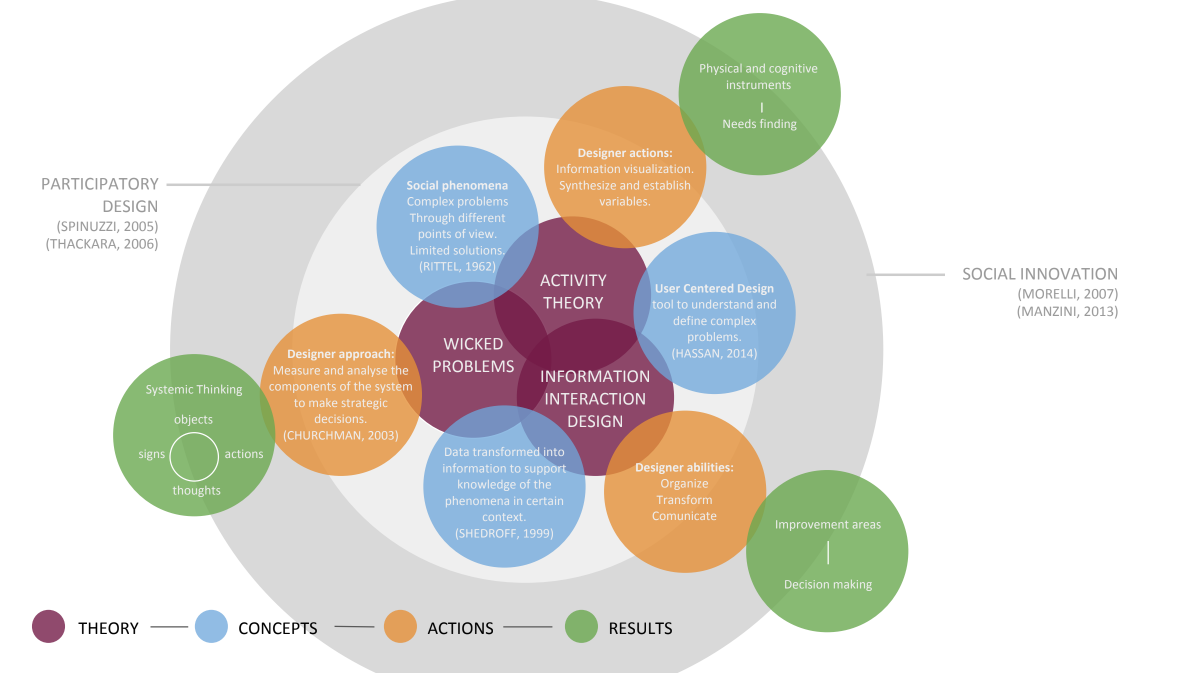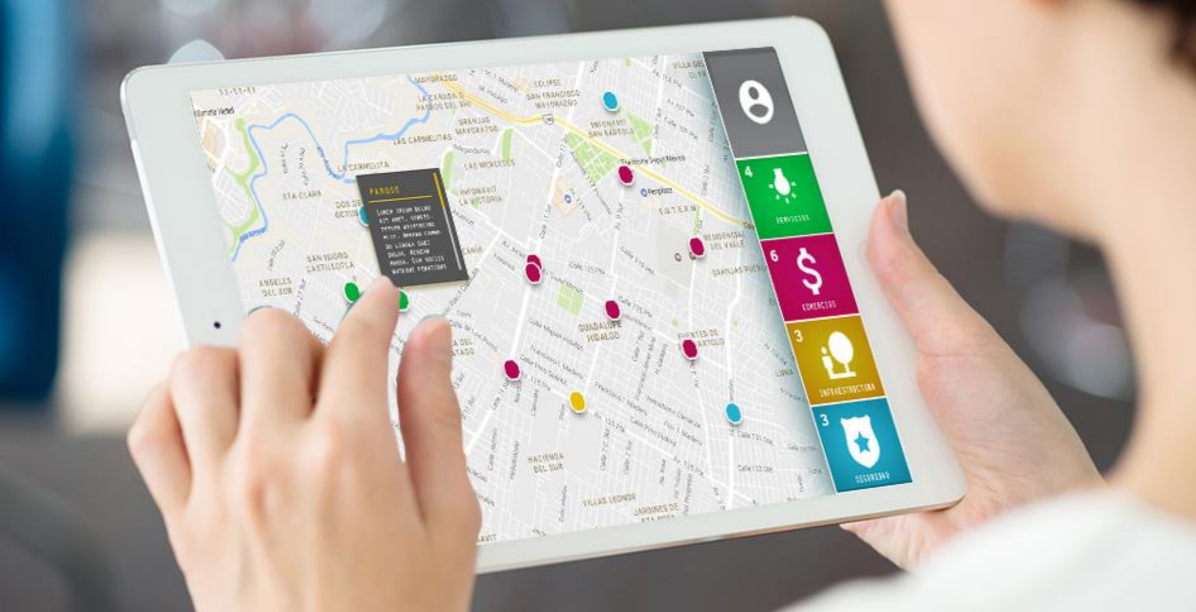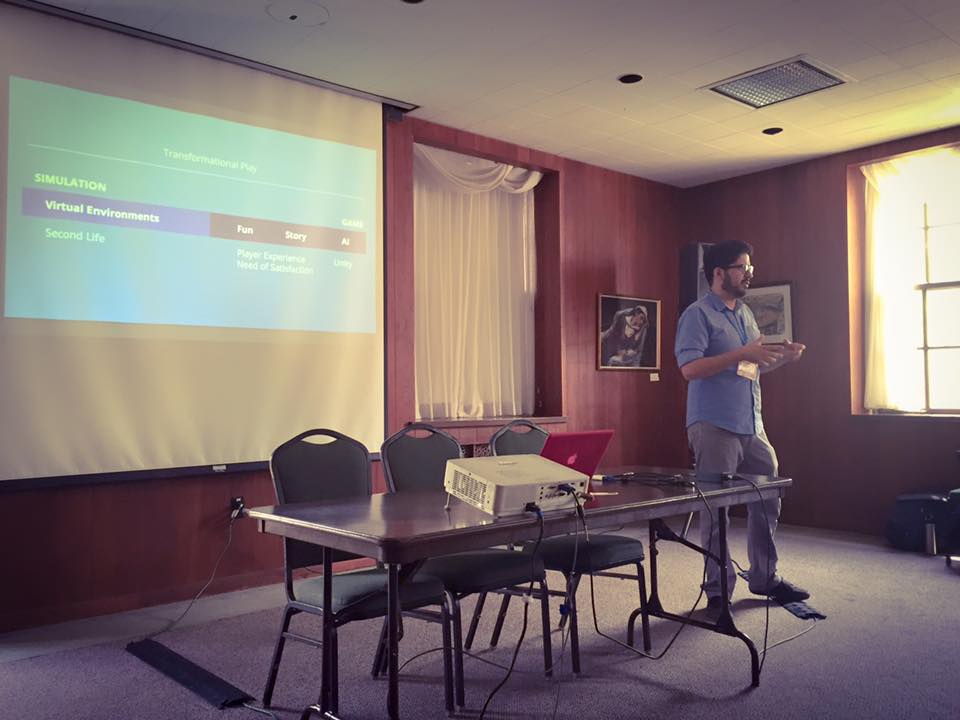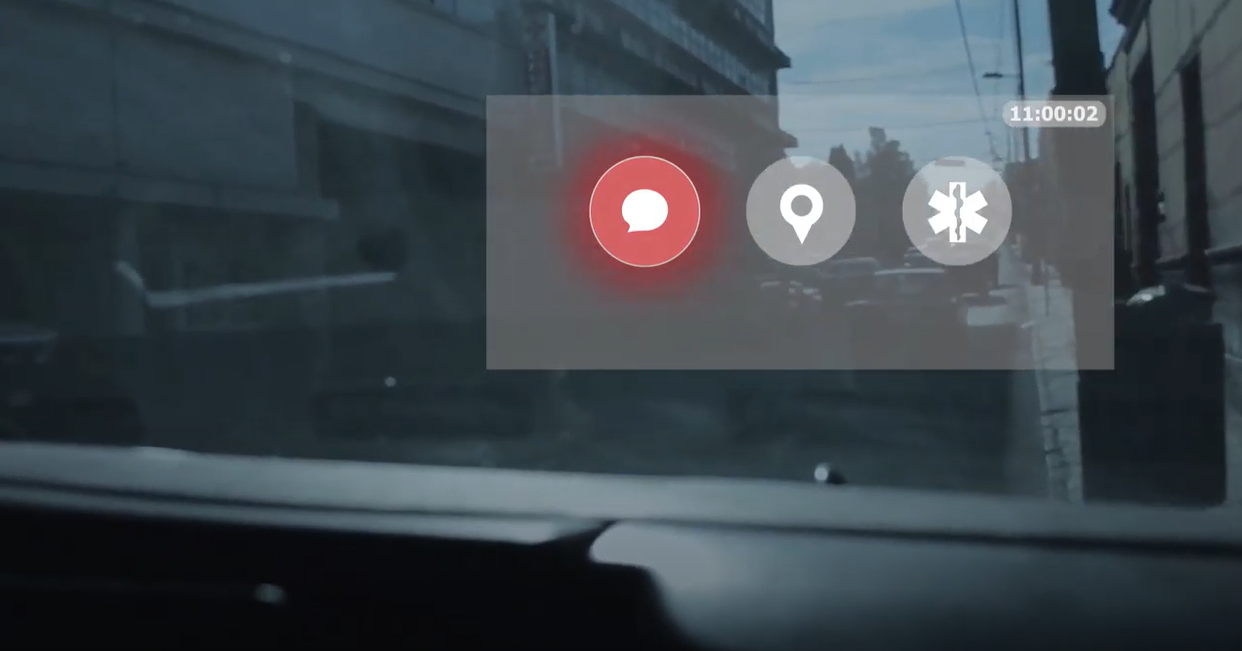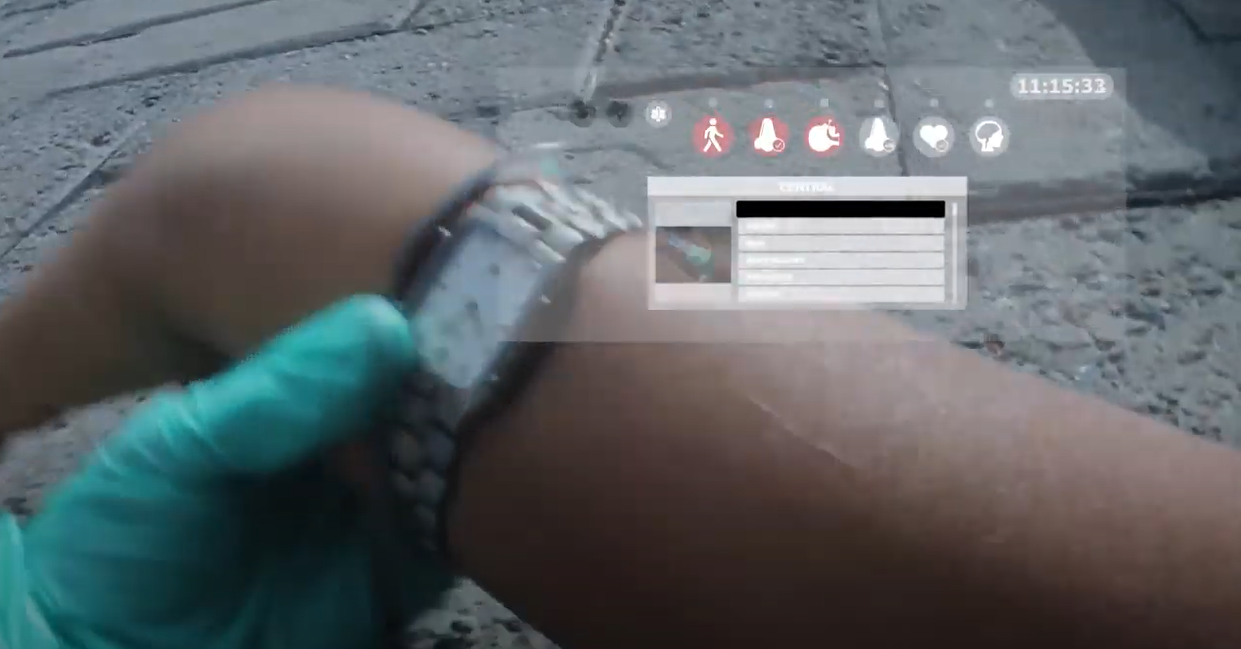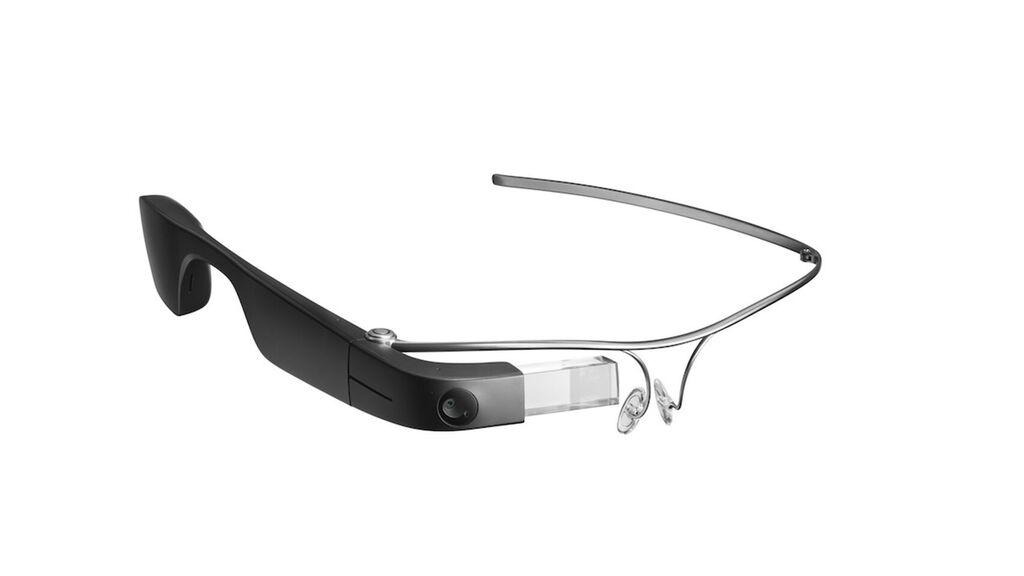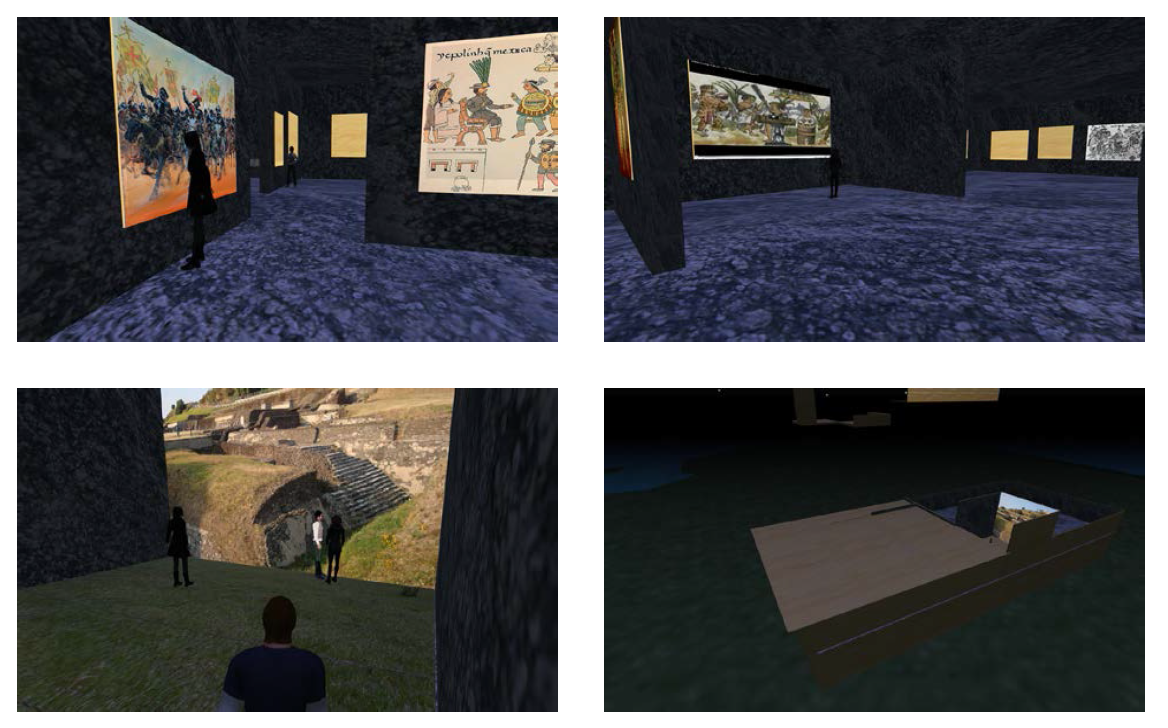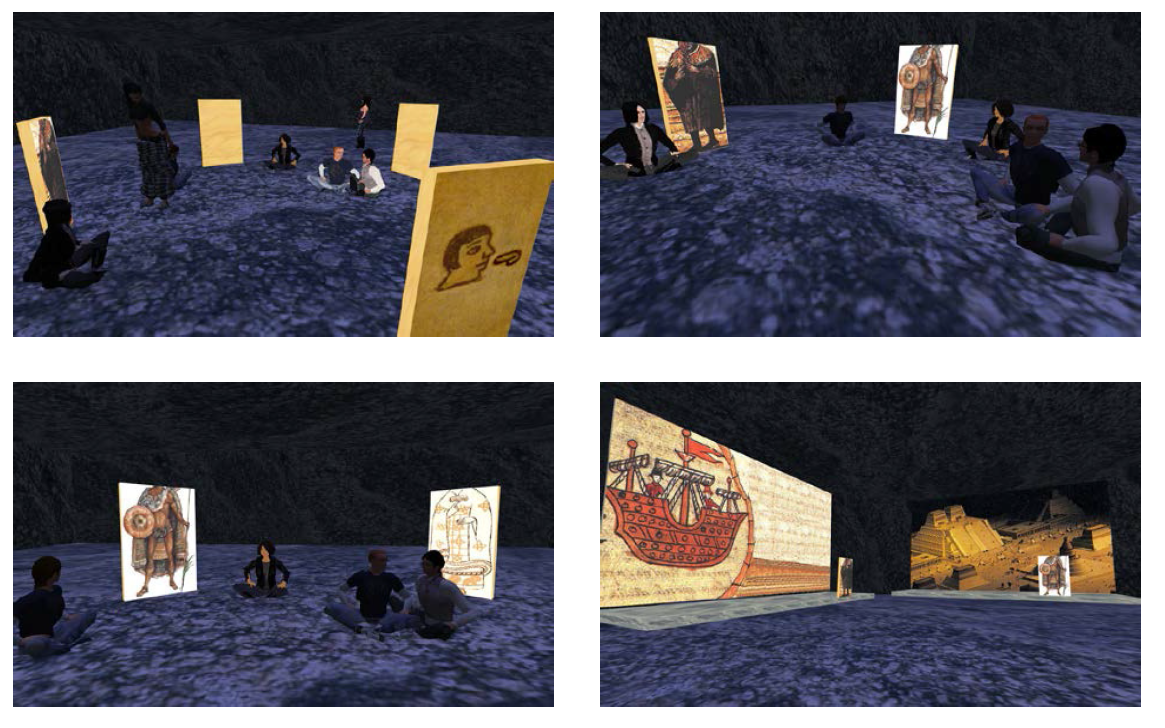Research Projects
Learning experience design through Minecraft, Imagineering, and Storytelling (2021)
The present research consists of implementing, through the learning experience design framework, a model that allows design students to connect the past with the present and the future of the profession. The process includes understanding the dimensions of the design of a historical character related to the discipline, implementing the hero's journey to tell his story but also contextualizing it in a three-dimensional environment in Minecraft. The video game allows them to express abstract elements in concrete through a three-dimensional representation that provides a user experience where you can also learn about these outstanding characters of the discipline.
RAZO, Roberto; SIORDIA, Manuel; GARCÍA, Arturo. Learning experience design through Minecraft, Imagineering, and Storytelling.. Avances en Interacción Humano-Computadora, [S.l.], n. 1, p. 58-61, nov. 2021. ISSN 2594-2352. Available at: <https://aihc.amexihc.org/index.php/aihc/article/view/89>.
Date accessed: 22 feb. 2022. doi: http://dx.doi.org/10.47756/aihc.y6i1.89.
Virtual Reality applied to the first aid and pre-hospital emergency care competencies learning process (2019)
This paper describes the design process and results that were carried out during the project, and how they pointed the design in the direction of a virtual reality simulator applied to the context of first aid and pre-hospital emergency care training with the Mexican Red Cross in Puebla City México. The main goal was to achieve profound learning through contextualization. Virtual reality proposes an accessible, innovative, attractive and effective environment to achieve these objectives. The project was developed through user centered design practices along with multidisciplinary theories of learning, design and technology. The intention is to generate a feasible, viable and desirable product that has an impact on society and specifically on the lives of users.
Razo, R. R., García, M. A. (2019, December). Virtual Reality applied to the first aid and pre-hospital emergency care competencies learning process. Research and development in Learning Environments. ISBN BUAP: 978‐607-525‐665‐8. Huelva, EspañaDR © United Academic Journals (UA Journals)
Augmented Reality as a too to build identity and appropriation of public space (2018)
In this work, we present a workshop to support the implementation of augmented reality as a vehicle analyze and extend the message in public murals to rethink and redefine the impact in the identity construction of that piece in the community. With this proposal we seek that participants can have a participatory design process to understand the communication intention of the mural, its impact in the community that cohabits and to extend the message through an new audiovisual narrative proposal displayed in mobile technology in situ.
Razo R. R., & González M. D. (2018, October). Augmented Reality as a tool to build identity and appropriation of public space. About MexIHC 2018. The Seventh Mexican Conference on Human-Computer Interaction is the premier Human-Computer Interaction conference in Mexico
Geo Referenced Map for Participatory Design (2017)
Working with Mexican community centers, this project aims to explore the development of an interactive Geo Referenced Map to help gather data from members of the community that after an information visualization process can be used to empower them implementing participatory design and improve their own context.
Razo R. R., & González M. D. (2017, November). Geo Referenced Map for Participatory Design. In Proceedings of the 8th Latin American Conference on Human-Computer Interaction (p. 6). ACM.
https://dl.acm.org/citation.cfm?id=3151479&dl=ACM&coll=DL
TASK: A Transformational video game (2015)
Design students need to learn ethnographic skills for user-centered design. We want them to learn that in an interview there are different kinds of questions that can lead to different kind of responses. To do this, we are designing a video game to allow a situated learning experience through the dynamics between people, content, and context.
In this game design the following concepts were applied: Transformational Play (Barab, 2010), Player Experience Need of Satisfaction (Rigby & Ryan, 2011) and the 36 learning principles of learning (Gee, 2003).
Doctoral Consortium - GLS11, Conference Proceedings (2014)
PhD Project Presentation: To design, create and evaluate an educational
video game using as pedagogical fundament the situated learning and
transformational play theory to teach ethnographic research skills in
interaction design college students.
Red Cross Triage App Design for Augmented Reality Glasses (2014)
The authors of this article go through the process of designing of Triage System using a Google Glass Application prototype, based on the procedure used by adjunct emergency hospital personnel to classify the injured in an emergency (Fernández, 2006). This application can help personnel in charge of an emergency to locate which hospital has rooms available for every type of patient delivered by ambulance, which is a very important factor for effective emergency medical care (Martínez, 2001). The main objective of this paper is to establish necessary and sufficient requirements to develop an efficient user--friendly procedure by the use of augmented reality glasses and controlled by voice commands. The prototype design comes from a categorization of information obtained by observing and interviewing active adjunct emergency hospital personnel from the Red Cross performing an actual application of Triage in an emergency scenario. Once the functional prototype was designed, a usability test was performed on 6 volunteer paramedics. The results of this test revealed that even though the general experience would benefit the categorization and distribution of victims injured in a real emergency, a detailed analysis is required to establish the words needed as voice commands to navigate through the interface and to establish visual feedback principles for various commands of the system.
del. Rocío Fuentes Fernández, M., Bernabe, C. I. T., & Razo, R. R. (2014, November). Red Cross Triage App Design for Augmented Reality Glasses. In Proceedings of the 5th Mexican Conference on Human-Computer Interaction (p. 11). ACM
https://dl.acm.org/citation.cfm?id=2676697
Video Demo: http://goo.gl/W0pvyg
Design, develop and implementation of a Transformational Experience for History Classes (2014)
The following report is the record of the process of design, implementation and evaluation of a Transformational Play (Barab, 2009) for teaching a historical theme, in this case The Conquest of Mexico, through the application of the concepts learned in 3D virtual environment. In this type of serious game, students confront a significant social problem within a virtual environment, to be confronted with situations that may occur in a real context and the consequences of the decisions taken, respond to factors simulated environment-specific search to develop skills that they can apply in their daily lives. These strategies seek to generate knowledge through which the student will be constituted and may modify its environment. In this case the activity arises as the act of historicizing, action understood as: the study of historical events through the internalization of the human aspects of the different positions of the actors in these events, in order to discover where we are located, currently-(O’Gorman in Mayer, during an interview with Zarate, 2010). The findings of the investigation were analized using qualitative analysis research strategies, conclusions and recommendations are also discussed.
https://www.dropbox.com/s/665tumfy6y19cqv/CIAMTE%202013%20ISBN.pdf?dl=0
